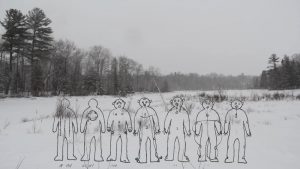The media sensation that arose out of the Jonbenet Ramsey murder case in 1996, fascinated people across America. The film, Casting Jonbenet, directed by Kitty Greene is an experimental film in my estimation because of its unique structure. As the title suggests, this film is a heavily stylized quasi-documentary. It follows a dozen or so local actors in Boulder, Colorado that are auditioning for roles to play members of the Ramsey family in an unnamed fiction movie about the unsolved killing of the 6 year old beauty pageant queen. The 80 minute film is a combination of them performing their screen tests, their commentary and theories about what really happened to Jonbenet, and them sharing deeply personal stories about how they relate to the “characters”. By removing the real figures of this case, and focusing on the actors, Greene is able to get to a raw and human place that exposes why tragedy porn continues to fascinate the public, and garner national attention. The actors also provide a unique insight, because part of their job is to get into the mind of their character. One man speaks about finding a dead body, and how that would play into his performance as John. One woman speaks about yelling at her child after bedwetting. Another actress admits to being abused as a child. What becomes clear is that the reason people are so obsessed with the mystery of Jonbenet Ramsey is a combination of the draw of the unsolvable and the fact that they can relate to some part of it. It is fascinating to watch the actors project their own traumas and insecurities on people they’ve only known through the lens of a tabloid spectacle. It is deeply unsettling from start to finish.
Towards the end the film it gets very meta. The camera pans out so we see all the actors on the soundstage acting out their particular bits at the same time, as if running through each possible theory of what could have happened. It unifies all the infinite possible explanations, as each one seems to represent what might have happened in different parallel dimensions as a camera tracks across the scene while another camera captures it all from still farther back. This multilayered piece brings up questions about child exploitation, crime and punishment, law and order, guilt, and what it means to be an actor.

